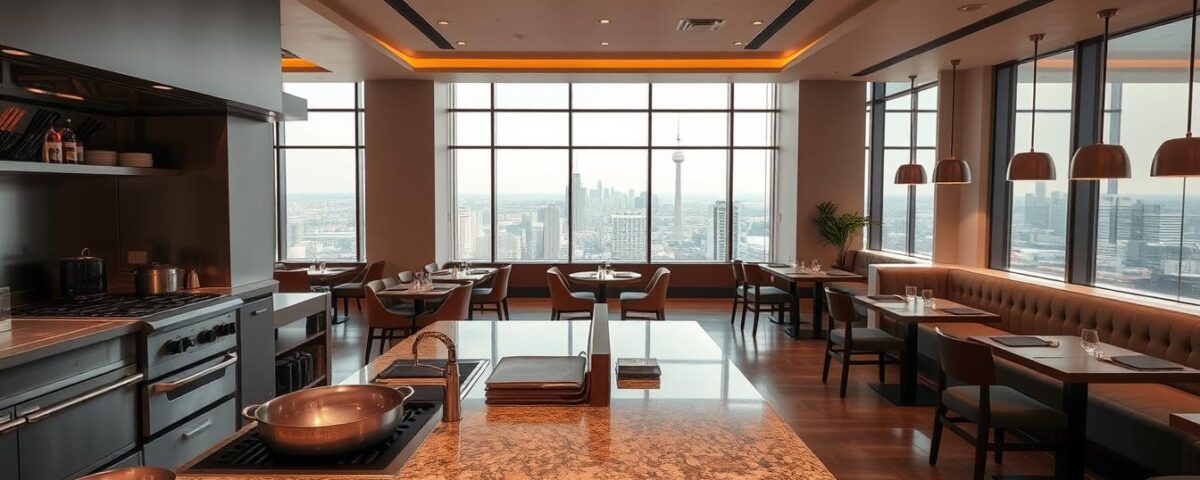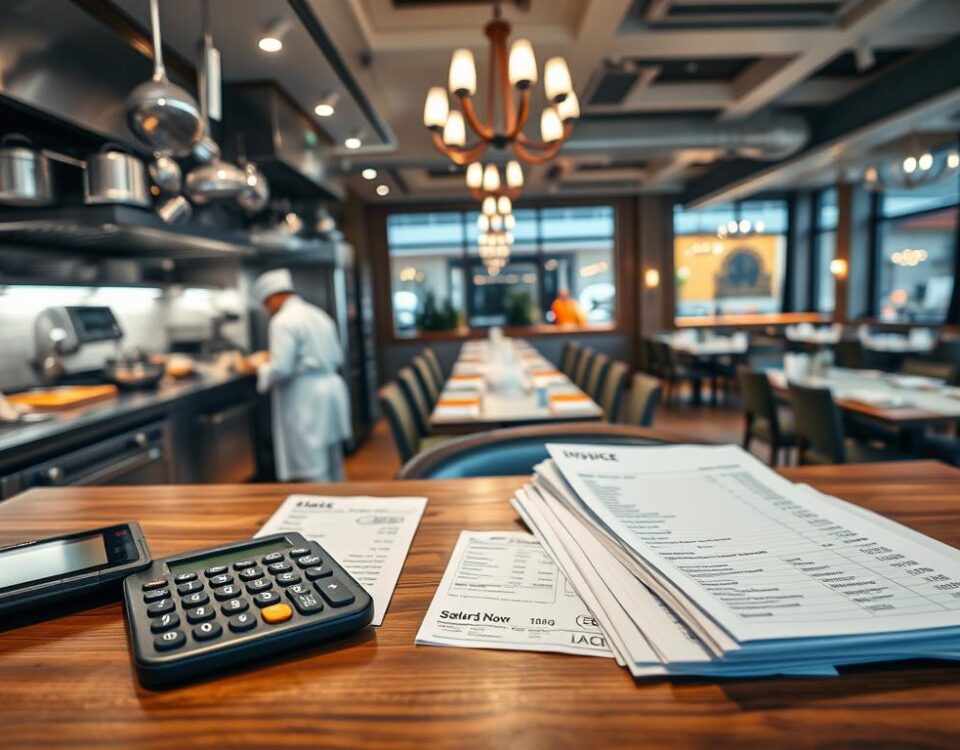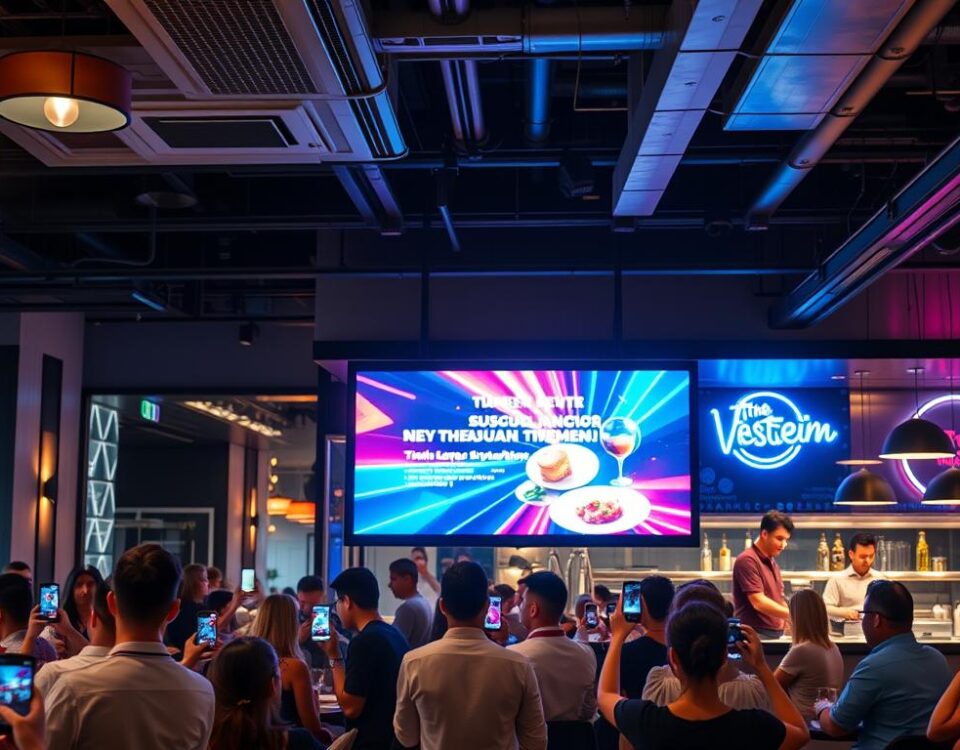
I Tried 7 Viral Restaurant Marketing Hacks—Here Are the Results
October 7, 2025
Cost to Open a Restaurant: Quick Calculator and Budget Guide
October 8, 2025Opening a restaurant is a thrilling venture, but it’s also a complex process fraught with financial pitfalls. I recall a friend who invested all their savings into a quaint café, only to be blindsided by unexpected renovation expenses.
Did you know that startup costs for a new restaurant can range from $95,000 to over $2 million? The actual amount depends on various factors, including lease agreements, permits, and renovation goals. Typical expenses include one-time purchases like furniture and equipment, alongside ongoing costs such as rent and utility bills.
Understanding the true scope of these expenses is crucial for creating a realistic budget and avoiding financial surprises. So, how can you accurately estimate the total cost of your restaurant build-out and ensure your business gets off to a successful start?
Key Takeaways
- Understand the typical expenses associated with opening a restaurant.
- Learn how to create a realistic budget for your build-out project.
- Discover strategies to control costs without compromising quality.
- Explore the hidden costs that often catch first-time restaurant owners off guard.
- Gain insights into the factors that influence restaurant startup costs.
Understanding Restaurant Build-Out Cost Fundamentals
To avoid surprises, it’s essential to grasp the fundamentals of restaurant build-out costs in the United States. The total startup cost of a restaurant can range from $95,000 to over $2 million. Understanding these costs is crucial for budgeting and planning.
Average Cost Ranges in the United States
The average cost of opening a restaurant varies significantly across different regions. On average, if you buy your restaurant location, you can expect to pay approximately $178 per square foot. However, if you’re renting, your costs are lower, at around $159 per square foot.
These costs can be influenced by various factors, including the location, size, and type of restaurant. For instance, urban centers like New York or San Francisco tend to have higher costs compared to suburban or rural areas.
Cost Per Square Foot Breakdown
Understanding the cost per square foot is vital for scaling your estimates based on your restaurant’s size. The average cost can range from $100 to $800 per square foot, depending on the concept and finishes.
- Fast-casual concepts: $100-$300 per square foot
- Full-service restaurants: $200-$500 per square foot
- Fine dining establishments: $500-$800 per square foot
New Build vs. Existing Location Comparison
The decision between building a new restaurant from scratch and renovating an existing location significantly impacts your overall costs. Renovations can save 30-40% compared to new construction, but the condition of the existing location plays a crucial role in determining the final cost.
Renovating an existing location can be cost-effective if the building infrastructure is sound, and the previous tenant’s layout aligns with your needs. However, if significant changes are required, the costs can escalate quickly.
By understanding these fundamentals, you can make informed decisions throughout your build-out planning process, ensuring that your project stays within budget and meets your expectations.
Key Factors That Influence Your Restaurant Build-Out Cost
Several critical elements can dramatically influence the cost of your restaurant build-out. Understanding these factors is essential to creating a realistic budget and avoiding costly surprises.
Location and Real Estate Considerations
The location of your restaurant is one of the most significant factors affecting your build-out cost. A prime location with high foot traffic can increase real estate costs, but it may also boost revenue. I’ll explore how your chosen location impacts not just real estate costs but also construction expenses, permit requirements, and labor rates.
Restaurant Size and Concept Impact
Your restaurant’s size and concept are closely intertwined with your build-out budget. A larger restaurant requires more construction materials, equipment, and utilities, increasing costs. The concept of your restaurant also plays a crucial role, as different types of restaurants have unique infrastructure needs. For example, a fine dining establishment requires more elaborate décor and kitchen equipment than a quick-service restaurant.
| Restaurant Type | Average Size (sq ft) | Build-Out Cost per Sq Ft | Total Build-Out Cost |
|---|---|---|---|
| Quick-Service | 1,000 – 1,500 | $50 – $100 | $50,000 – $150,000 |
| Full-Service | 3,000 – 5,000 | $100 – $200 | $300,000 – $1,000,000 |
| Fine Dining | 2,000 – 4,000 | $150 – $300 | $300,000 – $1,200,000 |
Building Condition and Required Renovations
The condition of the building you’ve chosen for your restaurant significantly impacts your build-out cost. Assessing the building’s condition before signing a lease is crucial to avoid unexpected renovation costs. I’ll discuss how to evaluate the building’s infrastructure and determine whether it can be repurposed for your concept or if extensive renovations are necessary.
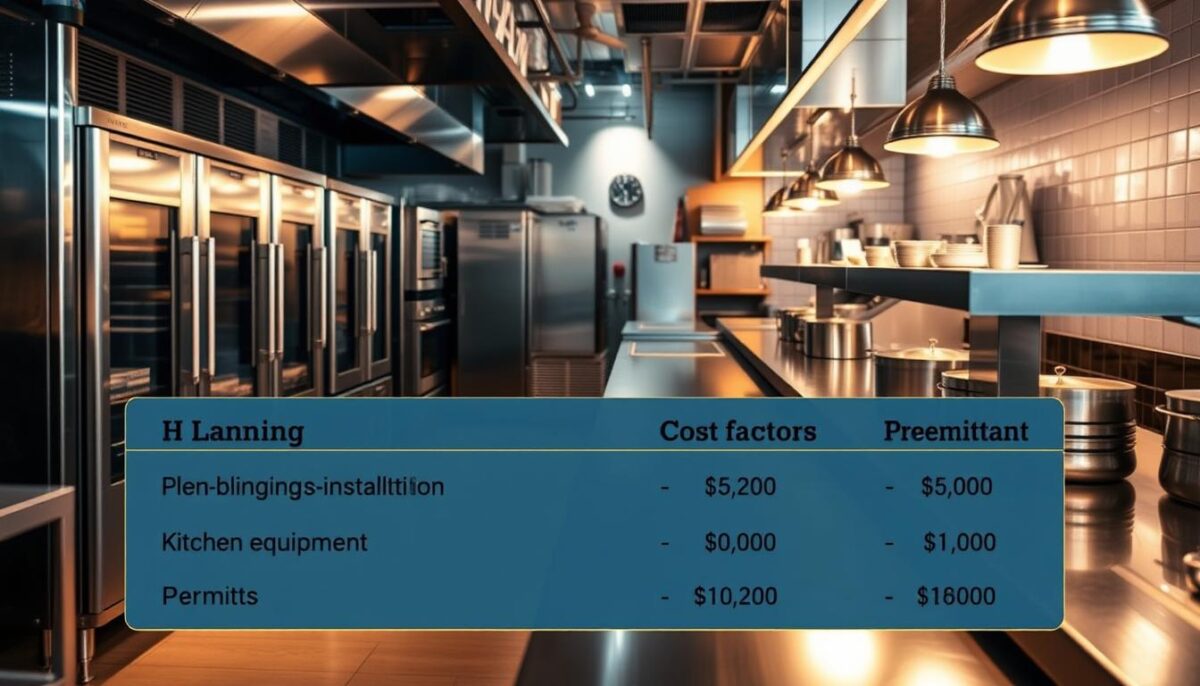
Breaking Down Construction and Renovation Expenses
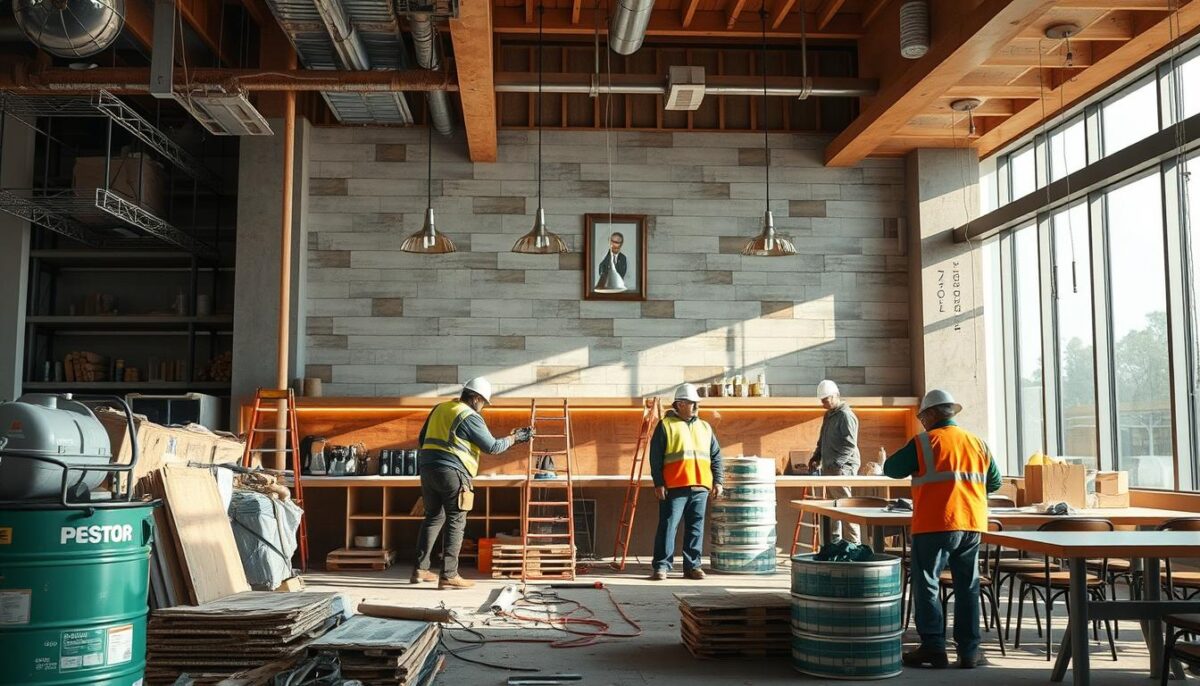
Breaking down construction and renovation expenses is essential for creating a realistic budget when opening a new restaurant. The costs associated with building out a restaurant can range from $100 to $800 per square foot, depending on the location, size, and concept.
Permits and Compliance Costs
Permit and compliance costs vary significantly by location. To budget properly, it’s crucial to understand the typical permits required for restaurant construction, such as building permits, health department permits, and zoning approvals. These costs can add up quickly, so it’s essential to factor them into your overall budget.
Construction Labor and Materials
Understanding the current construction labor market in your area is vital for accurate budgeting. Labor shortages and material costs can significantly impact your bottom line. For instance, the cost of materials like lumber, steel, and electrical components can fluctuate based on market conditions.
Design and Architecture Fees
Design and architecture fees are typically structured as a percentage of the overall construction cost. These services include creating a functional and aesthetically pleasing design that meets your restaurant’s needs. It’s essential to understand what services are included in these fees to ensure you’re getting the best value for your investment.
By comprehensively breaking down these expenses, you can better understand where your money is going during the build-out process and make informed decisions to stay within your budget.
Kitchen Equipment and Technology Investments
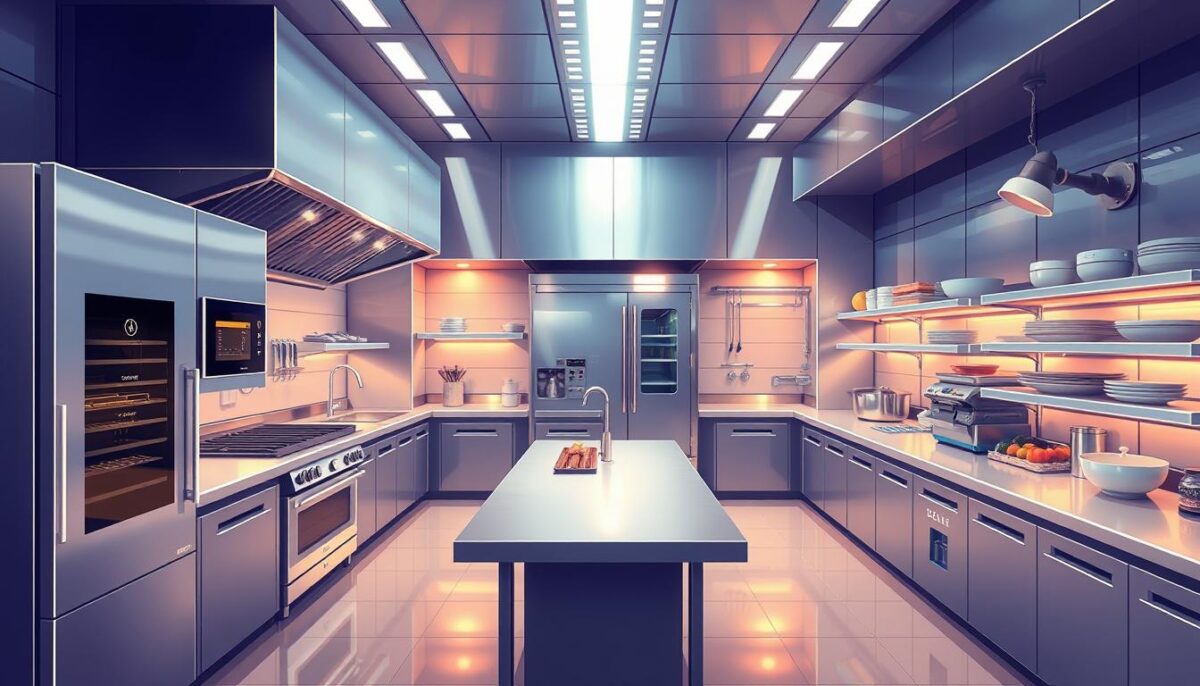
The backbone of any successful restaurant is its kitchen equipment and technology infrastructure. When setting up a restaurant, it’s crucial to invest in the right equipment and technology to ensure operational efficiency and customer satisfaction.
Essential Commercial Kitchen Equipment
Essential commercial kitchen equipment varies based on the restaurant concept, but generally includes ovens, stoves, refrigerators, and dishwashers. For example, a high-end steakhouse may require advanced grilling equipment, while a bakery will need industrial mixers and ovens. Understanding the specific needs of your restaurant concept is key to making smart investments in kitchen equipment.
POS Systems and Restaurant Technology
Modern POS systems and restaurant technology play a significant role in both initial build-out budget and long-term operational efficiency. A robust POS system can help manage orders, inventory, and customer data, improving overall service quality. Additionally, technology infrastructure such as network cabling and wireless access points is crucial for seamless operations.
Furniture, Fixtures, and Décor
Furniture, fixtures, and décor represent a significant portion of the build-out budget. It’s essential to allocate funds appropriately based on the restaurant concept. For instance, a fine dining restaurant may require high-end furniture and décor, while a casual eatery might opt for more straightforward designs. Balancing aesthetic considerations with durability and maintenance requirements is key to making the right choices.
Hidden Costs That Surprise First-Time Restaurant Owners
First-time restaurant owners often encounter unexpected expenses that can significantly impact their budget. While the initial build-out costs are a significant concern, there are numerous other expenditures that can arise during the process.
Utility Setup and Ongoing Expenses
Although you won’t be fully operational during construction, you’ll still need utilities like water, gas, and electricity. For a restaurant between 4,000 and 4,500 square feet, the average utility bill can range from $1,000 to $1,200 per month. It’s essential to factor in these costs when planning your budget.
| Utility | Average Cost |
|---|---|
| Electricity | $400-$500 |
| Water | $100-$200 |
| Gas | $200-$300 |
Insurance and Licensing Requirements
Insurance requirements during construction differ from operational coverage. You’ll need to secure policies that cover your business during the build-out phase. Licensing costs can also add up, depending on your location. As one expert notes, “Licensing fees can be a significant expense, and it’s crucial to research the specific requirements for your area.”
“The cost of licenses and permits can vary significantly depending on the jurisdiction and type of restaurant.”
Pre-Opening Staff Training and Salaries
A startup restaurant will incur additional expenses for staff training and salaries before opening. You’ll need to pay staff members for training and recipe testing, which can cost several thousand dollars. It’s essential to budget for these expenses to ensure a smooth opening.
Understanding these hidden costs can help you avoid budget shortfalls during your restaurant build-out process. By factoring in utility setup costs, insurance and licensing requirements, and pre-opening staff training expenses, you can create a more comprehensive budget and ensure a successful launch.
Creating a Realistic Restaurant Build-Out Budget
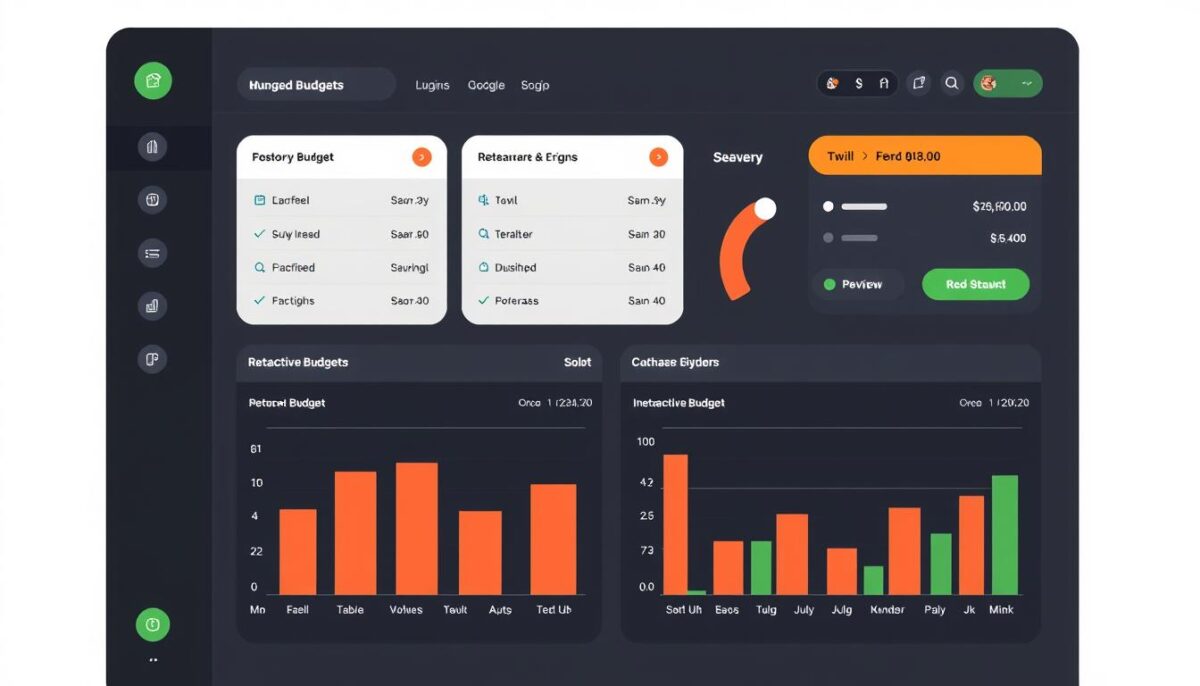
To avoid financial surprises, it’s essential to develop a comprehensive restaurant build-out budget. Careful budget planning is crucial to control your opening costs, which can range from $95,000 to over $2 million. The total startup cost depends on various factors, including furniture, kitchen equipment, monthly rent, and décor.
Developing a Comprehensive Budget Spreadsheet
Understanding how to structure your budget spreadsheet is crucial. I’ll provide a framework that helps you track and manage all build-out expenses effectively. This includes construction costs, permits, equipment, and labor expenses. A well-organized spreadsheet will help you stay on top of your expenses and make informed decisions.
Building in Contingency Funds
Contingency funds are essential in restaurant build-out projects to cover unexpected expenses. I recommend setting aside 10-20% of your total budget for contingencies. This fund will help you address any unexpected issues that arise during the build-out process, ensuring that your project stays on track.
Financing Options for Restaurant Build-Outs
Various financing options are available for restaurant build-outs, including traditional bank loans, equipment financing, and investor capital. It’s essential to explore these options and choose the one that best suits your business needs. You can also consider alternative lenders or crowdfunding platforms to secure the necessary funds.
By following these guidelines, you can create a realistic and comprehensive restaurant build-out budget that accounts for all expenses, both obvious and hidden. This will help you make informed decisions and ensure the success of your restaurant venture.
Cost-Saving Strategies Without Sacrificing Quality
The key to a successful restaurant build-out lies in balancing cost-saving strategies with quality maintenance. As a restaurant owner, you need to be mindful of your budget while ensuring that your establishment meets the highest standards.
To achieve this balance, consider the following strategies:
Phased Build-Out Approaches
A phased build-out allows you to manage cash flow while still opening on schedule. By prioritizing essential elements, you can complete the most critical aspects of your restaurant first and then proceed with less urgent tasks. This approach helps in spreading out the cost over time.
Used vs. New Equipment Considerations
When it comes to equipment, deciding between used and new can significantly impact your budget. Used equipment can be a cost-effective option, but it’s crucial to assess its condition and potential lifespan. New equipment, on the other hand, offers the latest technology and warranties, but at a higher upfront cost.
| Equipment Type | New Equipment Cost | Used Equipment Cost |
|---|---|---|
| Commercial Oven | $5,000 | $2,500 |
| Refrigeration Unit | $3,000 | $1,500 |
| POS System | $2,000 | $1,000 |
Strategic Vendor Negotiations
Negotiating with vendors can lead to significant savings. Building strong relationships with suppliers and contractors can help you secure favorable pricing and payment terms. It’s essential to compare quotes from multiple vendors to ensure you’re getting the best deal.
By implementing these cost-saving strategies, you can reduce your restaurant build-out expenses without compromising on quality. Effective planning and negotiation are key to achieving your desired outcome while staying within your budget.
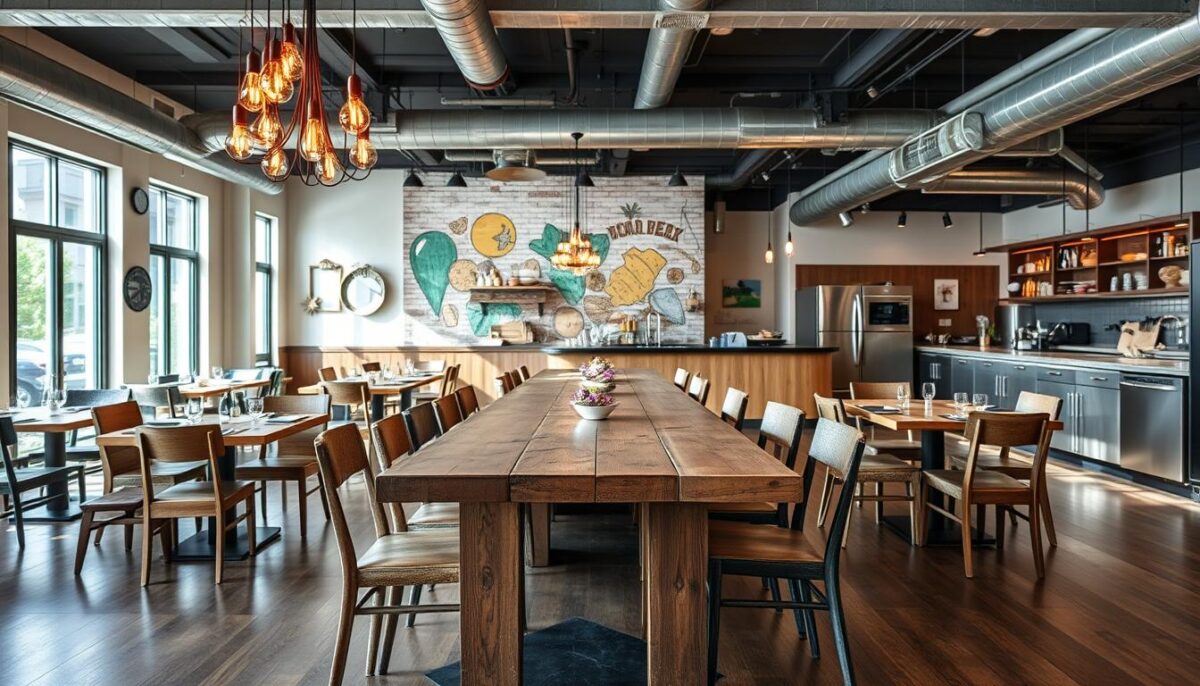
Real-World Examples: Restaurant Build-Out Case Studies
Through detailed case studies, we can better understand the complexities and expenses involved in building out restaurants of different sizes and concepts. Let’s examine two distinct examples that highlight the varying costs and challenges associated with different types of dining establishments.
Small Fast-Casual Restaurant (1,500 sq ft)
A small fast-casual restaurant build-out presents unique challenges due to its compact size. For a 1,500 square foot space, the total build-out cost can be significantly lower compared to larger establishments. In one case study, a fast-casual concept managed to complete their build-out for under $300,000. This was achieved through strategic decisions, such as opting for used equipment and efficient design planning.
The breakdown of costs for this small fast-casual restaurant included:
| Category | Cost |
|---|---|
| Construction | $120,000 |
| Equipment | $80,000 |
| Finishing Touches | $50,000 |
| Miscellaneous | $30,000 |
| Total | $280,000 |
Mid-Size Full-Service Restaurant (5,000 sq ft)
In contrast, a mid-size full-service restaurant requires a significantly larger investment due to its increased size and complexity. For a 5,000 square foot location, the build-out costs can easily exceed $1 million. One case study revealed that a full-service concept managed their $1.2 million build-out budget by making strategic decisions on where to invest and where to economize.
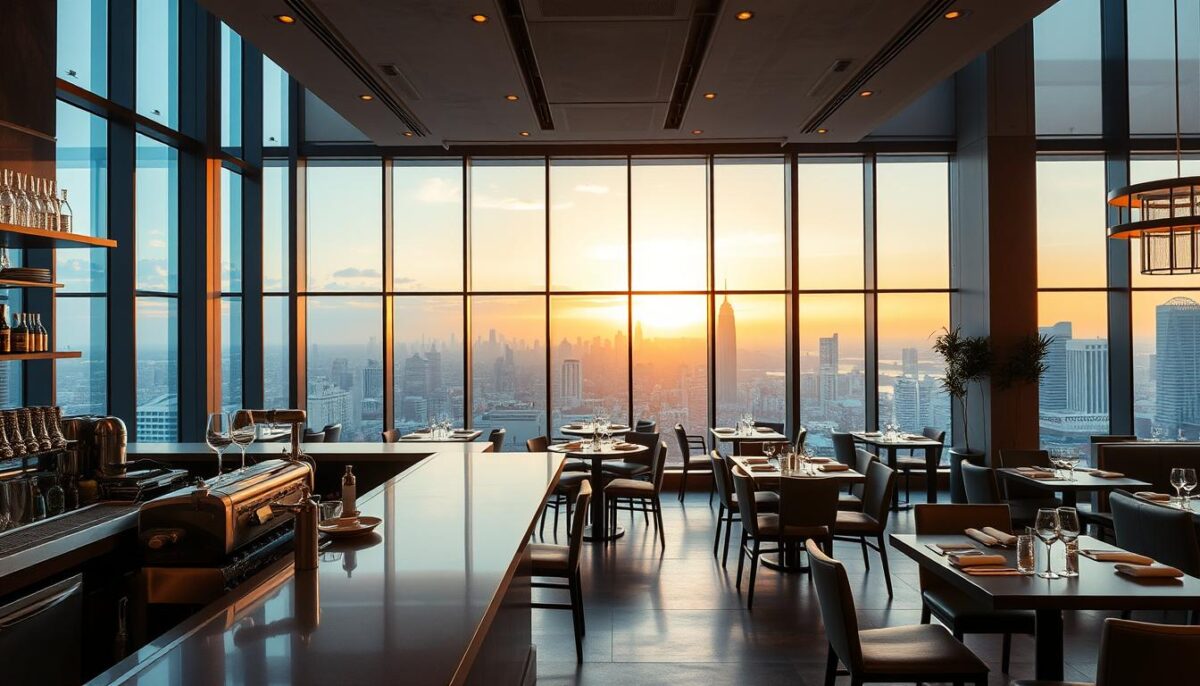
The cost breakdown for this mid-size full-service restaurant included substantial investments in high-quality equipment, décor, and technology to enhance the dining experience.
Conclusion: Planning for Success Beyond the Build-Out
A well-executed restaurant build-out is just the beginning; long-term operational success requires thoughtful consideration. As you plan your build-out, it’s essential to think about how your decisions will impact your ongoing costs and overall business profitability.
Understanding the relationship between your initial investments and future operational expenses is crucial. By building flexibility into your restaurant design, you can accommodate future changes without major renovations, ultimately saving money and improving your market competitiveness.
For more expert advice on running a successful business, visit our Resource Hub, where you’ll find valuable insights to enhance your operations and improve your bottom line. Effective planning during the build-out phase can significantly impact your long-term success in the competitive food and dining industry.
FAQ
What is the average cost per square foot for a restaurant build-out?
The average cost per square foot can range from 0 to 0, depending on the location, size, and concept of the restaurant. For example, a high-end restaurant in a major city may cost more per square foot than a casual eatery in a smaller town.
How do I determine the total build-out cost for my restaurant?
To determine the total build-out cost, you’ll need to consider factors such as construction labor, materials, equipment, and design fees. I recommend creating a comprehensive budget spreadsheet to track expenses and stay organized.
What are some hidden costs associated with restaurant build-outs?
Some hidden costs to watch out for include utility setup fees, insurance premiums, and pre-opening staff training expenses. It’s essential to factor these costs into your budget to avoid surprises down the line.
Can I save money by using used equipment for my restaurant?
Yes, using used equipment can be a cost-effective option, but it’s crucial to weigh the pros and cons. While used equipment may be cheaper upfront, it may require more maintenance or have a shorter lifespan than new equipment.
How do I choose the right POS system for my restaurant?
When selecting a POS system, consider factors such as ease of use, compatibility with your existing systems, and customer support. I recommend researching different options and reading reviews to find the best fit for your business.
What financing options are available for restaurant build-outs?
There are several financing options available, including loans, grants, and investors. It’s essential to explore these options and create a solid business plan to secure funding for your restaurant build-out.
How can I create a realistic budget for my restaurant build-out?
To create a realistic budget, I recommend developing a comprehensive budget spreadsheet, building in contingency funds, and researching financing options. It’s also essential to prioritize your spending based on your restaurant’s needs and goals.
